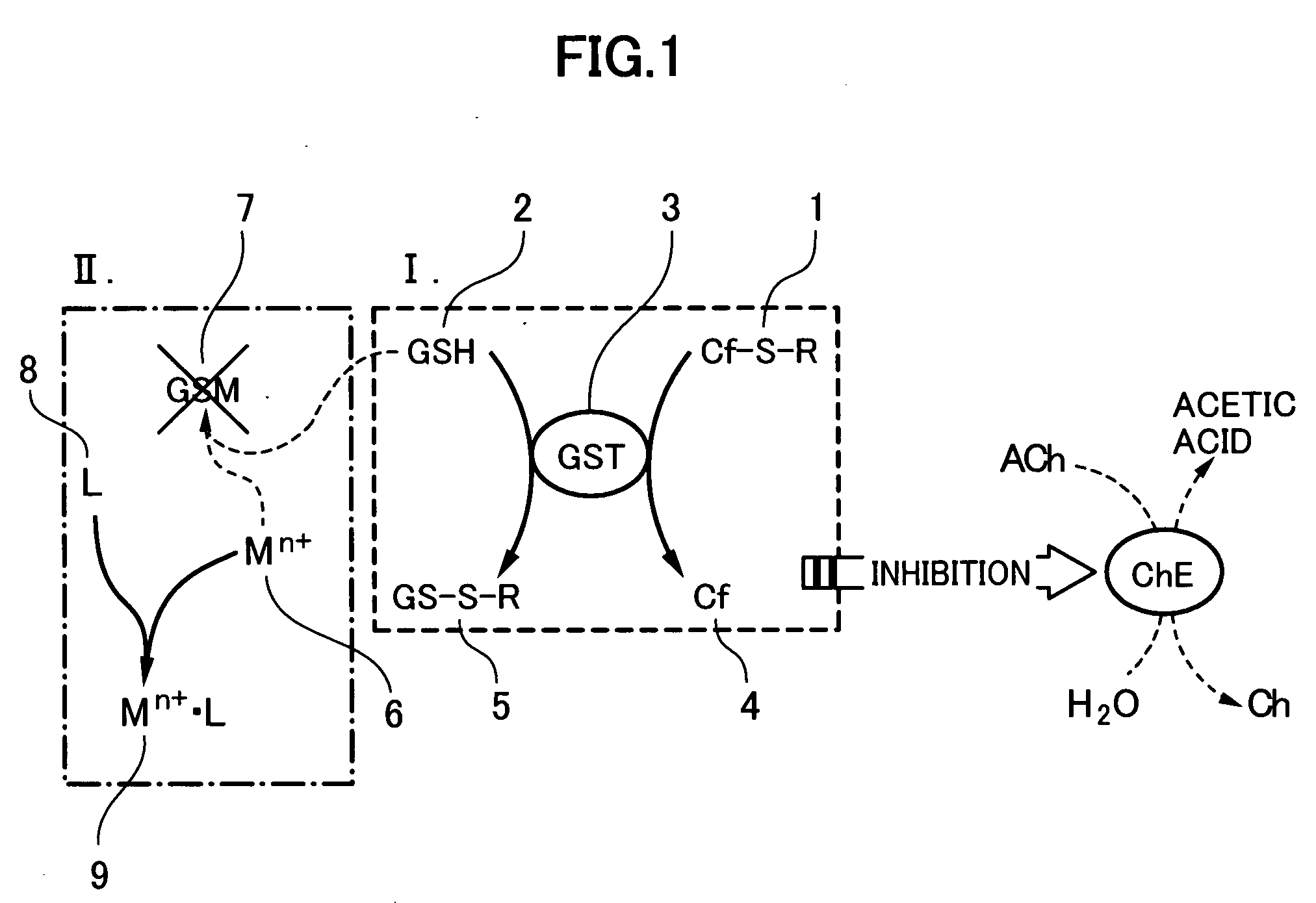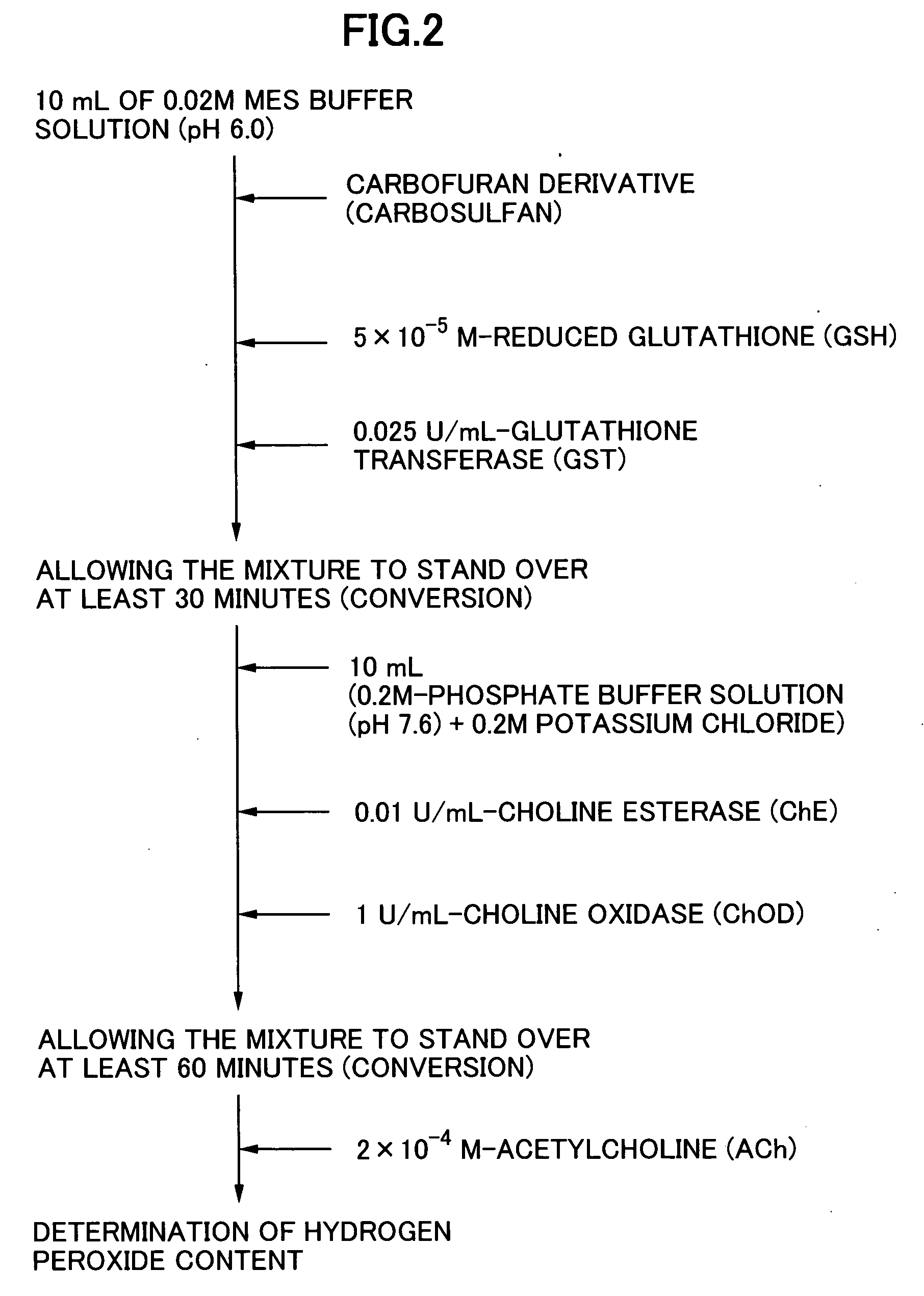Method for analyzing residual agricultural chemical
a technology of agricultural chemicals and residuals, applied in the field of agricultural chemical detection or analysis, can solve the problems of insufficient analysis precision, reduced analysis precision, insufficient long-acting properties, etc., and achieve the effect of high precision
- Summary
- Abstract
- Description
- Claims
- Application Information
AI Technical Summary
Benefits of technology
Problems solved by technology
Method used
Image
Examples
example 1
[0048] In this Example, it was intended to confirm the derivatization of carbosulfan (see FIG. 2). Carbosulfan was converted into carbofuran by adding a reduced glutathione (GSH), to a concentration of 5×10−5M, and a glutathione-transferase (GST), to a concentration of 0.025 U / mL, to 10 mL of a 0.02M Mes buffer solution (pH 6.0) (2-morpholino-ethane sulfonic acid) containing carbosulfan in a variety of concentrations and then allowing each resulting reaction system to stand over at least 30 minutes.
[0049] Then, 10 mL of a solution containing 0.1M phosphate buffer solution (pH 7.6) and 0.2M potassium chloride was added to the foregoing solution which had been allowed to stand, to thus obtain a solution having a volume of 20 mL. Then, to the resulting solution, there were added a choline esterase and a choline oxidase to concentrations of 0.01 U / mL and 0.5 U / mL, respectively and then the resulting mixture was allowed to stand over at least 60 minutes so that these enzymes were brough...
example 2
[0052] This Example was conducted to confirm whether the method of the present invention permits the detection or analysis of any benfuracarb as a carbofuran derivative possibly present in brown rice as a test sample, or not, by the addition of benfuracarb to the brown rice and the subsequent recovery thereof. First, brown rice was pulverized, 25 g of the powdered brown rice was weighed out from the powdered brown rice and then benfuracarb was added in a concentration of 20 ppb to 25 g of the powdered brown rice. Thereafter, to 25 g of the powdered brown rice, there were added 25 mL of water and 50 mL of acetonitrile to thus extract the agricultural chemical using a shaker (Step 1).
[0053] Then the resulting extract was subjected to suction filtration to remove contaminants of various kinds present therein. The resulting filtrate thus obtained was then subjected to liquid-liquid distribution to remove any water-soluble contaminant and metal ions possibly present therein. This liquid...
PUM
 Login to View More
Login to View More Abstract
Description
Claims
Application Information
 Login to View More
Login to View More - R&D
- Intellectual Property
- Life Sciences
- Materials
- Tech Scout
- Unparalleled Data Quality
- Higher Quality Content
- 60% Fewer Hallucinations
Browse by: Latest US Patents, China's latest patents, Technical Efficacy Thesaurus, Application Domain, Technology Topic, Popular Technical Reports.
© 2025 PatSnap. All rights reserved.Legal|Privacy policy|Modern Slavery Act Transparency Statement|Sitemap|About US| Contact US: help@patsnap.com



